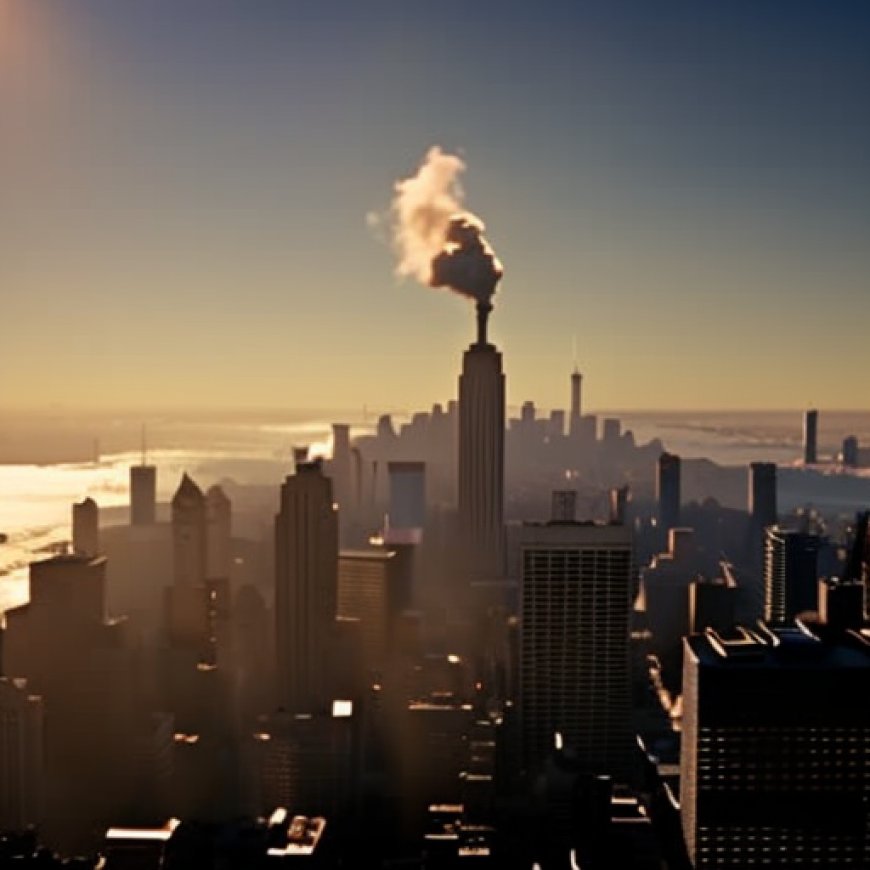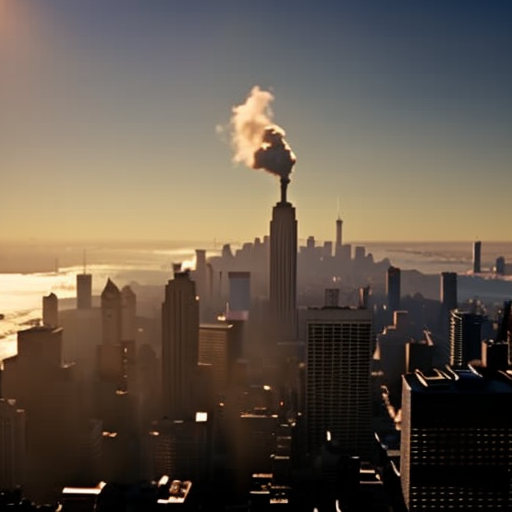Worst U.S. cities for air pollution ranked in new American Lung Association report
Worst U.S. cities for air pollution ranked in new American Lung Association report CBS News


Almost four out of every 10 people in the United States live in a place where air pollution is considered bad enough to put their health at risk
The American Lung Association warned in its latest “State of the Air” report released on Wednesday. That proportion of people — about 39% of the population — had risen sharply since earlier rounds of pollutant data were analyzed for the annual report last year, and the trends were especially pronounced in certain parts of the country.
Air quality monitoring
This year’s air quality report was based on pollution data collected in 2020, 2021 and 2022 by the Environmental Protection Agency. The American Lung Association, a charity organization focused on improving lung health and addressing lung disease, has released “State of the Air” reports annually since 2000.
Sustainable Development Goals (SDGs)
- No Poverty
- Zero Hunger
- Good Health and Well-being
- Quality Education
- Gender Equality
- Clean Water and Sanitation
- Affordable and Clean Energy
- Decent Work and Economic Growth
- Industry, Innovation, and Infrastructure
- Reduced Inequalities
- Sustainable Cities and Communities
- Responsible Consumption and Production
- Climate Action
- Life Below Water
- Life on Land
- Peace, Justice, and Strong Institutions
- Partnerships for the Goals
Worst cities for particle pollution
Exposure to particulate matter in the air can potentially cause or exacerbate respiratory and cardiovascular problems, according to health officials. Across the country, researchers marked a continued climb over that three-year period in days where particle pollution was considered “very unhealthy” or “hazardous,” compared with years that were monitored previously. Between 2020 and 2022, there were 135 days marked “very unhealthy” and 79 marked “hazardous,” with areas of concern spread across 58 counties housing some 32 million in 10 different states.
Worst cities for ozone
Although ozone in the upper atmosphere protects Earth, high levels of the gas farther down can be harmful to human health and the environment. Experts have noted in particular that inhaling unhealthy concentrations of ozone in the air can cause a range of breathing problems and even weaken the lungs against infection.
SDGs, Targets, and Indicators
SDG 3: Good Health and Well-being
– Target 3.9: By 2030, substantially reduce the number of deaths and illnesses from hazardous chemicals and air, water, and soil pollution and contamination.
– Indicator: Number of people exposed to unhealthy air pollution levels.
SDG 11: Sustainable Cities and Communities
– Target 11.6: By 2030, reduce the adverse per capita environmental impact of cities, including by paying special attention to air quality and municipal and other waste management.
– Indicator: Number of cities with air quality above the accepted general health standards.
SDG 13: Climate Action
– Target 13.1: Strengthen resilience and adaptive capacity to climate-related hazards and natural disasters in all countries.
– Indicator: Number of days with high ozone levels and spikes in particle pollution related to extreme heat, drought, and wildfires.
Table: SDGs, Targets, and Indicators
| SDGs | Targets | Indicators |
|---|---|---|
| SDG 3: Good Health and Well-being | Target 3.9: By 2030, substantially reduce the number of deaths and illnesses from hazardous chemicals and air, water, and soil pollution and contamination. | Number of people exposed to unhealthy air pollution levels. |
| SDG 11: Sustainable Cities and Communities | Target 11.6: By 2030, reduce the adverse per capita environmental impact of cities, including by paying special attention to air quality and municipal and other waste management. | Number of cities with air quality above the accepted general health standards. |
| SDG 13: Climate Action | Target 13.1: Strengthen resilience and adaptive capacity to climate-related hazards and natural disasters in all countries. | Number of days with high ozone levels and spikes in particle pollution related to extreme heat, drought, and wildfires. |
Explanation:
1. The article addresses SDG 3 (Good Health and Well-being), SDG 11 (Sustainable Cities and Communities), and SDG 13 (Climate Action) as the issues discussed are related to air pollution, its impact on health, and the environmental factors contributing to it.
2. Specific targets under these SDGs include reducing deaths and illnesses from hazardous chemicals and air pollution (Target 3.9), reducing the adverse environmental impact of cities, including air quality (Target 11.6), and strengthening resilience to climate-related hazards (Target 13.1).
3. The article mentions indicators such as the number of people exposed to unhealthy air pollution levels, the number of cities with air quality above accepted standards, and the number of days with high ozone levels and spikes in particle pollution related to extreme heat, drought, and wildfires. These indicators can be used to measure progress towards the identified targets.
4. The table presents the findings from analyzing the article, listing the relevant SDGs, targets, and indicators.
Note: The HTML formatting may not be visible in this plain text format.
Behold! This splendid article springs forth from the wellspring of knowledge, shaped by a wondrous proprietary AI technology that delved into a vast ocean of data, illuminating the path towards the Sustainable Development Goals. Remember that all rights are reserved by SDG Investors LLC, empowering us to champion progress together.
Source: cbsnews.com

Join us, as fellow seekers of change, on a transformative journey at https://sdgtalks.ai/welcome, where you can become a member and actively contribute to shaping a brighter future.







